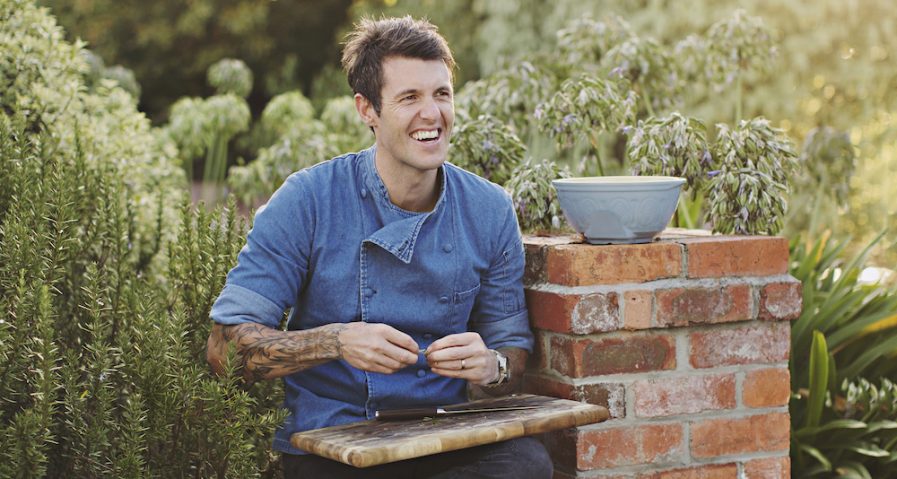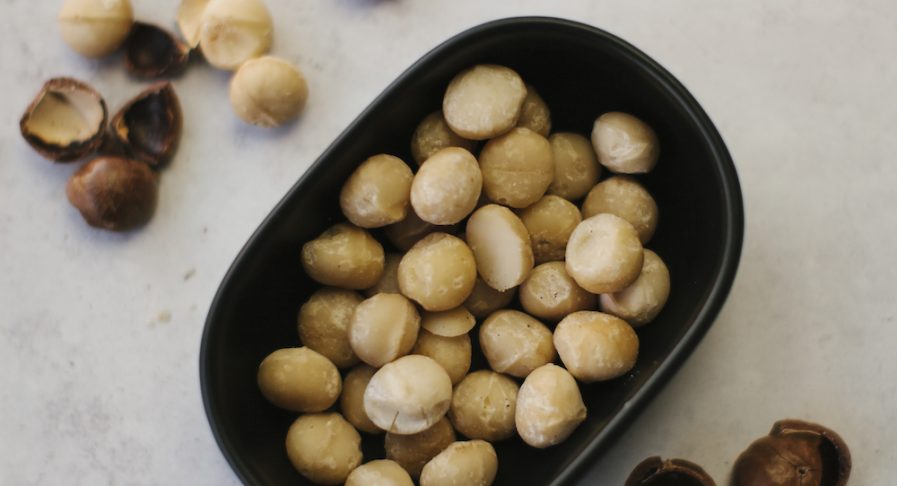When Ben Milbourne entered the MasterChef kitchen as a contestant on the hit Australian cooking show in 2012, he thought good food depended on the cook. Fast forward a decade, and Ben’s outlook has changed, with the passionate chef, foodie and TV host saying it’s the grower who is the true hero.

Putting under-discovered ingredients in the spotlight
Ben’s inspiration for creating Left Off the Map is similar to what inspires him when he’s creating a menu for Peacock and Jones, the Tasmanian restaurant where he is Culinary Curator.
“I enjoy showcasing ingredients that are less well known, and that’s what I aim to do both on the show and in the restaurant,” says Ben.
“I have relationships with a lot of smaller growers, and I love getting my hands on whatever they have coming out of the ground and then building my ideas around that produce. Left Off the Map encourages people to think differently about where their food comes from, cooking with ingredients they may previously have overlooked and shining a light on places in Tasmania that even the locals may not have heard of.”

Ben is a huge fan of Australian grown macadamias but feels they are an under-leveraged ingredient.
“A lot of people know about macadamias but not that many people include them in their diet regularly. There’s a misunderstanding that they’re expensive when really I think many people just lack an understanding of all the different ways you can use them,” he says.
“We are featuring five recipes with macadamias in this season of Left Off the Map and I’m really excited to help our audience think differently about macadamias and discover some unique ways of using them.”
Unrivalled versatility
Get Ben talking about why he loves macadamias and you’re transported into a world where seemingly anything is possible.
“They are just so incredibly versatile,” he enthuses. “Macadamias work equally well in sweet and savoury dishes. They can be used raw for a delicate flavour and a soft crunch or roasted to achieve a more intense noisette flavour with a cleaner break. They coat your mouth differently depending on whether they’re raw or roasted.”
Ben is also a huge fan of the macadamia’s oil content. “I love that buttery quality you get from their oil content and that’s what enables them to transfer flavour so well; their healthy fats carry other flavours, and they can be used as a seasoning to drive the flavour that’s already in a dish. They really lend themselves to being adventurous as a chef.”

The latest season of Left Off the Map has Ben demonstrating a range of applications for macadamias including a blueberry crumble cake, dukkah and avocado toast, and charred cos lettuce with anchovy and macadamia. He also shows how to make macadamia crumble with greens and salmon – a dish that’s become a hit in his restaurant.
“We make the macadamia crumble by toasting macadamias with sourdough and corn chips until they’re golden and then blitzing them in a food processor. We serve that with steamed greens as a side with fish. It’s amazing and everyone who tastes it tries to guess what’s in it, but hardly anyone gets it right!”
When at home with his wife and two young children, Ben uses macadamias to make his own granola by roasting them with pepitas, rolled oats, almonds, brown sugar, and milk powder that’s been caramelised with butter. But the twist is in how he uses it. “I don’t eat it for breakfast – I serve it over ice cream for dessert,” he reveals.
So, what’s Ben’s favourite way to use macadamias?
“Microplaning,” he says emphatically. “I’m doing that a lot right now. When you grate macadamias finely, they kind of melt and impart that beautiful nutty flavour to the rest of the dish. It’s great on both sweet and savoury dishes.”

The importance of ingredient origin
Ben says a key learning from his time on MasterChef is that smart chefs work with good producers.
“If you have good produce, you don’t need to do a lot to the food to make it sing. You’re far better to plate up three great ingredients cooked and seasoned to perfection than six or seven inferior ones. If you’re putting too many ingredients on a plate, you’re overcompensating for the product not being top quality. Most good food is actually quite simple. It’s clean and fresh. You know what’s in it. But it features an innovative way of using or plating a certain ingredient.”
His connection with indigenous Australian ingredients – including macadamias – has deepened significantly in recent years.
“I did a Connection to Country tour with an Aboriginal elder on the east coast of Tasmania and it opened my eyes to all the food that’s growing around me and how indigenous people harvested that sustainably. As chefs, I believe we need to start using more of our native ingredients. If we start to tap into the knowledge of indigenous elders, there’s so much we can do with the food that’s in our own backyard,” he says.
“Macadamias are probably the most widely known and eaten native ingredient that Australia has. If we can drive awareness of the fact that macadamias are indigenous to Australia, it will change the way we look at other native ingredients too.”
A macadamia evolution
Ben says the way he uses macadamias has evolved significantly.
“Growing up I didn’t have macadamias often and they were usually coated in chocolate. Even when I started on MasterChef, I didn’t know a lot about them, and while some contestants were using them, it was in quite simple ways, usually just to add some texture to a dish,” he recalls.
Since that time, Ben says his understanding and appreciation for the nut has completely changed.
“Once I experienced fresh, raw, premium quality macadamias, it changed how I thought about them, and I fell in love. How I use them now largely reflects the time I’ve spent working in the restaurant. Being forced to think of restaurant-style ways to use ingredients has driven that evolution and made me think more laterally about macadamias. Through that and Left Off the Map, I love the fact I can show people how much is possible with this amazing whole food.”

All images courtesy of Ben Milbourne and Cultivate Productions


